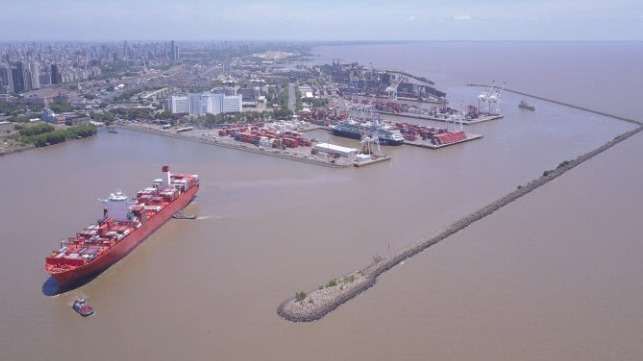 Credit: International Transport Forum_x000D_
Credit: International Transport Forum_x000D_
By MarEx 2018-10-11 20:22:05
_x000D_
A round-table organized by the International Transport Forum examined options for the future development of Buenos Aires specifically and ports located in cities more generally, as Buenos Aires and its neighboring ports exemplify the issues faced by many city ports.
_x000D_
A report produced as a result of the 2017 round-table has now been released. It notes that Argentina should strategically assess its long-term location options for container ports. Argentina currently has an opportunity to redesign its containerized freight transport system, because the three concessions for the terminals at the port of Buenos Aires (Puerto Nuevo) will expire in 2020.
_x000D_
The report emphasizes that effective port planning requires a thorough understanding of the way the needs of shippers are likely to develop in the future. “This sounds self-evident, but all too often port planners and policy makers have little knowledge of the main exporters and importers using the port and the related cargo flows.”
_x000D_
Port planning has often been mainly a question of timing, when to phase in expansions, with projections based on the extrapolation of past trends. This certainty is gone. Some ports have already developed long-term planning frameworks that include scenarios in which cargo volumes decline.
_x000D_
Conversely, structural reforms can drive a step-change increase in the volume of trade. The size of container ships in service is increasing with much more cargo to handle per ship. This puts huge stress on equipment and labor, with high idling rates between ship arrivals. This increases the need for flexibility in port labor forces and for pooling arrangements between terminals.
_x000D_
Larger yard capacity is required to deal with peak traffic and to provide buffer capacity in the connection with hinterland transport modes. This requires a lot of space. Terminal operators, port authorities and hinterland transport companies have to respond and often taxpayers cover the cost. Shipping companies reap benefits from the larger ships but are not responsible for many of the associated costs. Consequently, the total supply chain costs of larger ships may surpass the cost savings for shipping companies.
_x000D_
Increasing ship size has accelerated the trend for concentration among shipping lines, with a combination of horizontal and vertical integration that could lead to a freight transport system with very limited choice for shippers. This challenges the regulatory capacity of even the largest economies to address potential issues of abuse of market power. Review of the legal frameworks that provide antitrust exemption for conferences and alliances appears due.
_x000D_
The report states that port planning should involve consideration of a full range of potential scenarios for trade and containerization. Uncertainty implies that capacity expansion should be designed to be as modular and flexible as possible.
_x000D_
Public policy tends to focus on developing large hub ports, often seeking to expand transshipment. A thorough assessment of costs and benefits for transshipment ports is warranted, considering the small transshipment margins and the large costs of transshipment ports that are covered, usually, by the public purse. Not all ports can be hubs and feedering is often more efficient. As shipping becomes increasingly concentrated around a smaller number of hubs, feedering will become more prevalent worldwide.
_x000D_
With regard to addressing current bottlenecks, the report proposes to stimulate cooperation between stakeholders in the maritime logistics chain, as these issues can only be solved through collaboration. Port gate policies, such as truck appointment systems that provide drivers with time-slots in which they can deliver and pick up a container, can also help. The effectiveness of such systems is increased if it is coupled to measures to increase the visibility of cargo flows, for example via port community systems.
_x000D_
The report is available here.
_x000D_
source: www.maritime-executive.com
_x000D_
_x000D_
_x000D_


